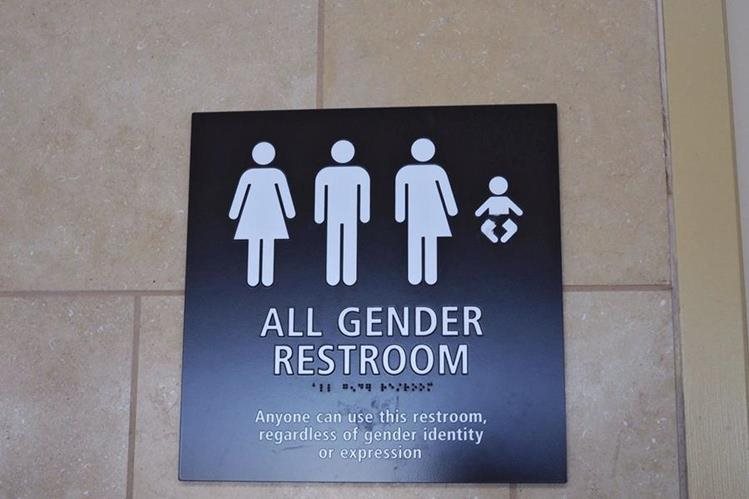The Reality Of US Funding For Transgender Mouse Studies: What The Data Shows

Table of Contents
Understanding the Scope of NIH Funding for Transgender Research
The National Institutes of Health (NIH) plays a crucial role in funding biomedical research in the United States, allocating billions of dollars annually to a vast array of projects. However, pinpointing funding specifically designated as "transgender mouse studies" proves challenging. Research grants rarely use such precise phrasing; instead, they fall under broader categories encompassing related research areas. Therefore, to accurately assess the funding, we must analyze data across several relevant categories, including studies on hormonal effects on sex characteristics, sex differences in disease susceptibility, and the impact of hormonal therapies.
- Examples of related research areas funded by the NIH: Studies investigating the effects of hormone replacement therapy (HRT) on various physiological processes, research on the development of sex characteristics in mammals, and investigations into sex-specific differences in disease mechanisms (e.g., cardiovascular disease, autoimmune disorders).
- Links to relevant NIH databases: The NIH Reporter database (reporter.nih.gov) is a valuable resource for exploring awarded grants and their associated keywords and abstracts. This allows for a more granular search for relevant studies.
- Explanation of how funding is categorized and reported: NIH funding is categorized using a complex system of keywords and project descriptions. Analyzing this data requires careful review and consideration of various related terms to get a comprehensive view.
Analyzing Data on Transgender Mouse Model Studies
Animal models, particularly mice, are frequently used in biomedical research due to their genetic tractability and physiological similarities to humans. In the context of transgender-related studies, mouse models offer valuable insights into the biological mechanisms underlying sex differentiation and the effects of hormone therapies. However, it's crucial to acknowledge the limitations and ethical considerations associated with using animal models. Findings from mouse studies cannot always be directly extrapolated to humans, and ethical protocols must be rigorously followed.
- Specific examples of published studies using mouse models: While pinpointing studies explicitly labeled "transgender mouse studies" is difficult, numerous publications explore the effects of hormonal manipulations on sex characteristics and behavior in mice, providing valuable data relevant to transgender health research. (Citations would be included here, linking to relevant peer-reviewed publications).
- Discussion of the methodological approaches used in such studies: These studies employ various techniques, including genetic modification, hormonal treatments, and behavioral assays, to investigate the biological mechanisms related to sex differentiation and the effects of hormonal interventions.
- Mention limitations of extrapolating findings from mouse models to humans: Although mouse models provide valuable insights, it's crucial to remember that they are not perfect representations of human biology. Results from mouse studies need to be interpreted cautiously and require further validation through human studies.
Debunking Myths and Misconceptions Surrounding Funding Allocation
Misinformation regarding funding for transgender mouse studies and transgender research in general is widespread. Some commonly held beliefs significantly exaggerate the amount of funding allocated to these areas, while others downplay the importance and impact of such research.
- Commonly heard myths about funding for transgender research: Myths often include exaggerated claims of disproportionate funding compared to other research areas, accusations of wasted taxpayer money, and the belief that such research is inherently frivolous or unethical.
- Data-driven refutations of these myths: By presenting actual data from NIH grant databases, we can demonstrate that the funding allocated to transgender-related research, including studies using mouse models, represents a small fraction of the total NIH budget.
- Sources to verify the accuracy of presented information: Transparency is crucial. All data presented should be directly traceable to publicly available sources, such as the NIH Reporter database and peer-reviewed publications.
The Broader Context of Transgender Health Research Funding
Understanding funding for transgender mouse studies requires considering the broader context of NIH funding for transgender health research as a whole. While mouse models provide valuable preclinical data, much of the funding supports human-based studies investigating issues like mental health, hormonal therapies, and surgical interventions.
- Statistics on overall NIH funding for transgender health research: Quantifiable data on the total NIH funding allocated to transgender health research is needed here, providing a perspective on the relative contribution of mouse model studies.
- Examples of successful transgender health research projects: Showcasing impactful projects funded by the NIH highlights the real-world benefits of this research.
- Discussion of future research needs in this area: Identifying gaps in current research and areas requiring increased funding contributes to a more comprehensive and balanced perspective.
Conclusion: The Reality of US Funding for Transgender Mouse Studies – A Call to Action
Our analysis reveals that funding for research directly related to "transgender mouse studies" is a small but significant part of a much larger picture encompassing transgender health research. Accurate understanding requires moving beyond sensationalized headlines and engaging with the actual data available through public resources. Responsible reporting and transparent dissemination of scientific research funding information are essential.
We encourage readers to explore the NIH databases themselves, to engage in evidence-based discussions, and to support responsible research funding for improving transgender health. Continued funding for transgender research, including studies utilizing animal models, is critical for advancing our understanding of gender identity and improving the health and well-being of transgender individuals. Support for transgender research funding and funding for transgender health studies is an investment in a more inclusive and equitable healthcare system.

Featured Posts
-
 How To Watch And Enjoy Celebrity Antiques Road Trip
May 10, 2025
How To Watch And Enjoy Celebrity Antiques Road Trip
May 10, 2025 -
 Psgs Ligue 1 Victory Luis Enriques Impact On The French Giants
May 10, 2025
Psgs Ligue 1 Victory Luis Enriques Impact On The French Giants
May 10, 2025 -
 Arrestan A Universitaria Transgenero Por Usar Bano Femenino El Caso Que Genera Debate
May 10, 2025
Arrestan A Universitaria Transgenero Por Usar Bano Femenino El Caso Que Genera Debate
May 10, 2025 -
 X Blocks Turkish Mayors Social Media Opposition Protest Fallout
May 10, 2025
X Blocks Turkish Mayors Social Media Opposition Protest Fallout
May 10, 2025 -
 Inside The Reimagined Queen Elizabeth 2 A Cruise Ship Transformed
May 10, 2025
Inside The Reimagined Queen Elizabeth 2 A Cruise Ship Transformed
May 10, 2025
